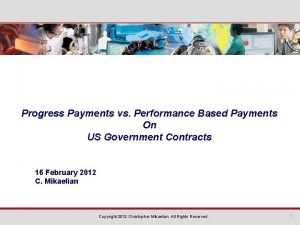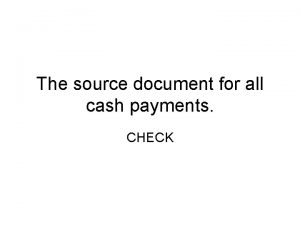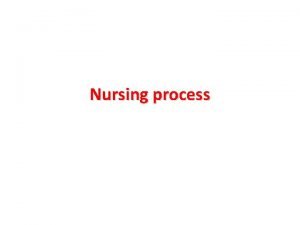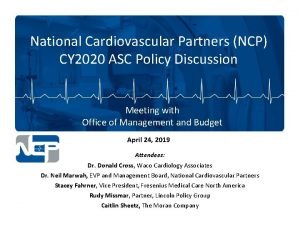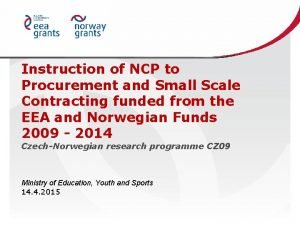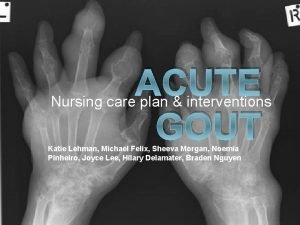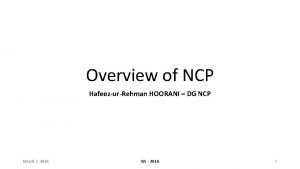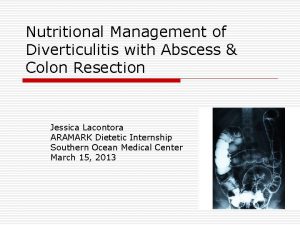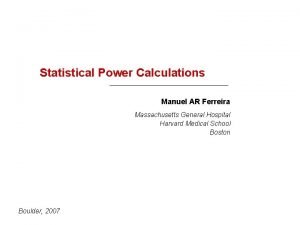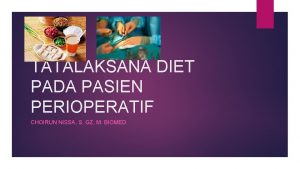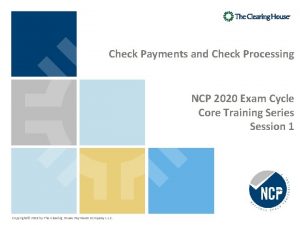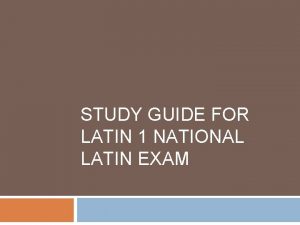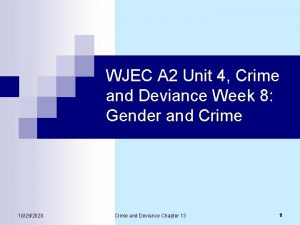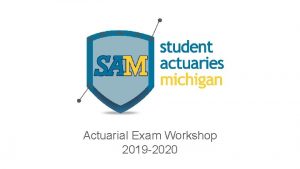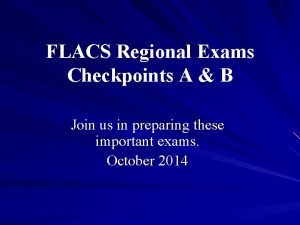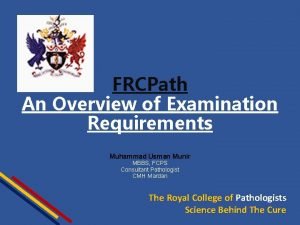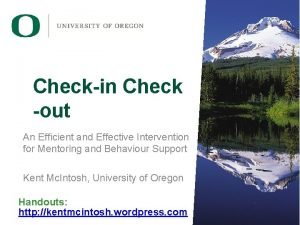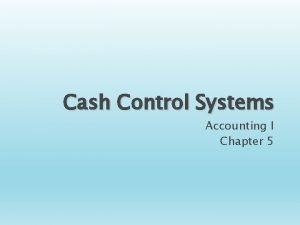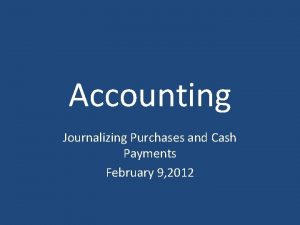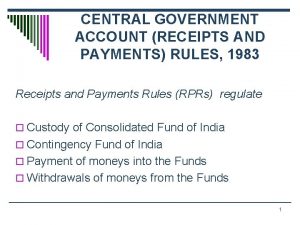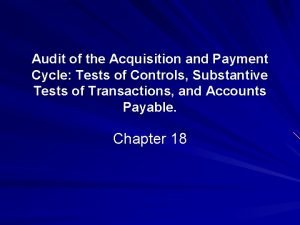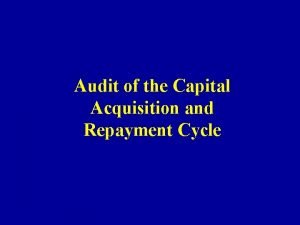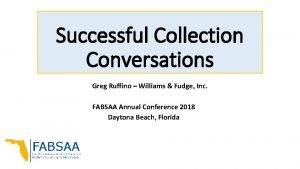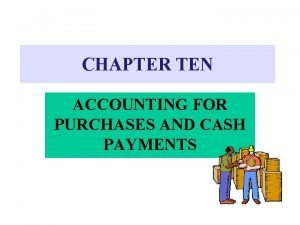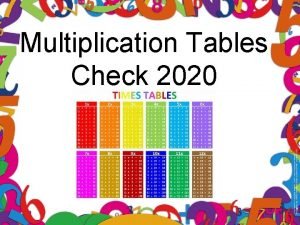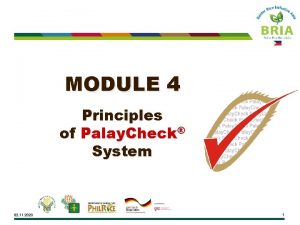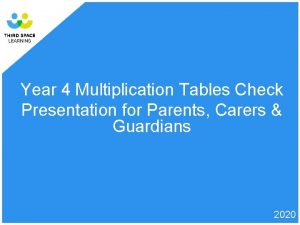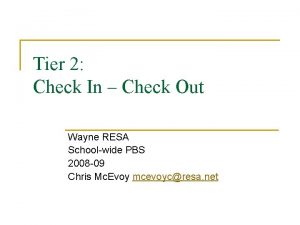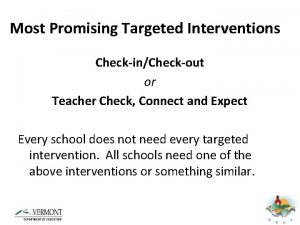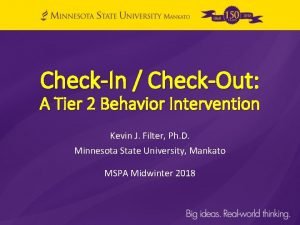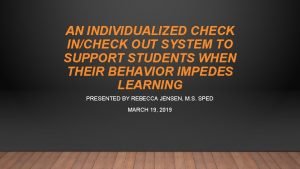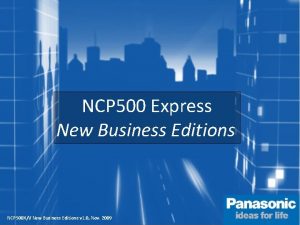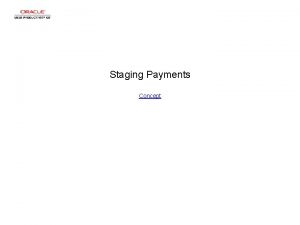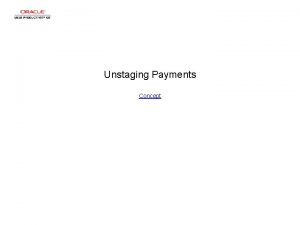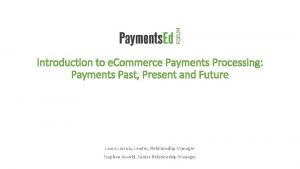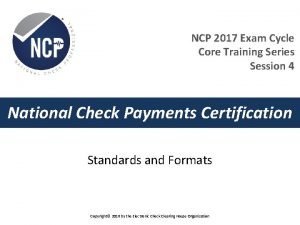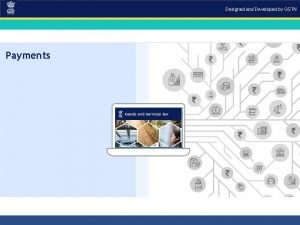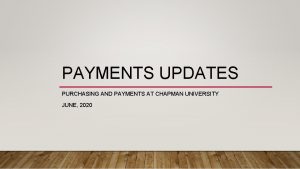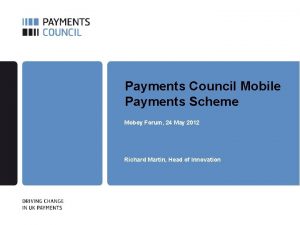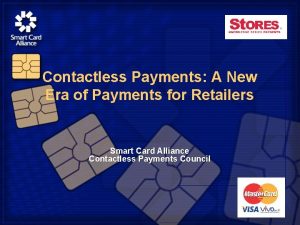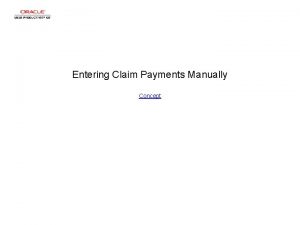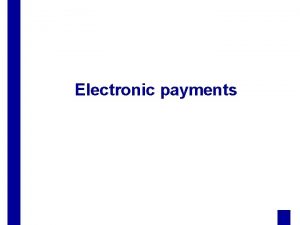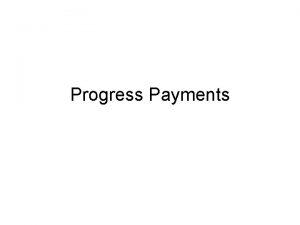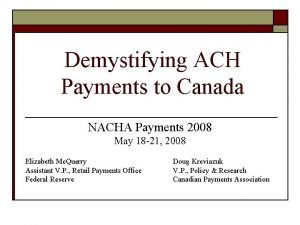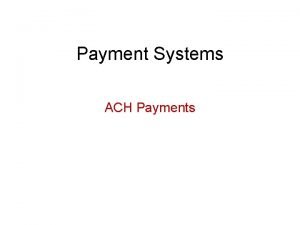Check Payments and Check Processing NCP 2020 Exam























































- Slides: 55

Check Payments and Check Processing NCP 2020 Exam Cycle Core Training Series Session 1 Copyright© 2019 by The Clearing House Payments Company L. L. C.

NOTICES This training series is designed to provide information on various aspects of check payments and the legal and rules framework for electronic check exchange. Responsibility for compliance with electronic check exchange rules, and/or the legal, operational and regulatory requirements applicable to electronic check exchange, remains at all times with the financial institution participating in the exchange and/or the individual or company using an exchange service provider. This presentation and the information contained herein is not intended as legal or compliance advice or recommendation to any person or company. Financial institutions should consult with their legal counsel regarding legal and operational requirements applicable to any electronic check exchange program they may offer or in which they may participate. This document could include technical inaccuracies or typographical errors and individual users are responsible for verifying any information found in this presentation and related “live” webinar or webinar playback. These materials may not be reproduced or published, in whole or in part, without the express permission of The Clearing House Payments Company L. L. C. Copyright© 2019 by The Clearing House Payments Company L. L. C. (Certain contributed content subject to third party copyrights) National Check Payments Certification 2

Exam Registration • Register for exam online with ECCHO and get access to free NCP study aids: – Jump. Start Reading Program – NCP Roadmap: To build a personalized study plan – P. R. E. P. Guide: Training, glossary, quizzes & more – Question of the Day & weekly summary • 2020 exam fees: – $450 ECCHO member / $575 non-member • Not sure about ECCHO membership? Register with ECC store. eccho. org HO fo Check out exam in c cp www. eccho. org/n 2020 Exam: April 18 – May 9 – Contact NCP Program Administration: ncpc@eccho. org National Check Payments Certification 3

P. R. E. P. Guide • Payments Resource and Exam Preparation Guide – 300+ pages of training and study materials including: • Sample multiple-choice exam • Section quiz questions with answer keys • Suggestions for further study (see sample below) National Check Payments Certification 4

Exam Prep Series • No one size fits all – Approach to study is unique for each person • NCP Exam covers a broad range of topics • Recommend, at a minimum, exam candidates cover topics that our outlined in NCP Exam Training Series: – Check Payments and Check Processing – Regulations: Uniform Commercial Code (UCC) – Regulations: Regulation CC – Part II – Standards and Formats – Image Exchange Rules and Agreements: ECCHO Rules – Image Exchange Rules and Agreements: Fed OC 3 – Image Exchange Processes – Exceptions: Returns and Adjustments – Check Products – Fraud, Risk and Risk Mitigation National Check Payments Certification 5

Session Topics • Parts & Parties to the Check • Rules and Agreements • Check Collection Process National Check Payments Certification 6

Parts & Parties to the Check National Check Payments Certification 7

Check Definitions • For common check payment definitions and basic processing definitions, see “Check Payments – The Basics” – Session recording includes general banking and processing terms; available to all exam registrants • Additional definitions are provided throughout this series as they relate each set of topics discussed • Today’s session will cover: – Parts and Parties to the check – MICR line and selected MICR line fields – Rules and agreements for interbank exchange of checks – Overview of the check collection process • See NCP P. R. E. P. Guide exhibit “Glossary of Terms and Common Acronyms” for additional information National Check Payments Certification 8

Parts of the Check Amount • Part of definition of a negotiable instrument o Should appear twice on the check: ü Courtesy amount: Amount written in numbers (may also be referred to as convenience amount) ü Legal amount: Amount written in words Bank • Includes a savings bank, savings and loan association, credit union, or trust company Drawer • Person who signs, or is identified in a draft, as the person ordering payment Drawee • Bank or person ordered in draft to make payment National Check Payments Certification 9

Parts of the Check Collecting Bank • Bank handling an item for collection, except the payor bank • Federal Reserve Banks are collecting bank Correspondent Bank • Financial institution that provides services on behalf of another financial institution • Can conduct business transactions, accept deposits and gather documents on behalf of other financial institutions they serve under the correspondent agreement o Examples: ü Banker’s bank (correspondent) ü Their member banks (respondents) Depositary Bank • First bank to take an item even if it is also the payor bank Intermediary Bank • Bank to which item is transferred in course of collection • Except the depositary or payor bank National Check Payments Certification 10

Parties to the Check Presenting bank: - Bank presenting an item - Except a payor bank National Check Payments Certification Payor Bank: - Bank that is drawee of a draft - Bank ordered in draft to make payment 11

MICR Line (1. 12) • From the Regulation CC definition – Numbers, which may include routing number, account number, check amount, and other information that are: • Printed near the bottom of an original check or substitute check in magnetic ink in accordance with standards; or • Contained in a record specified for MICR line data in an electronic check or electronic returned check in accordance with standards National Check Payments Certification 12

Check MICR Line • Band along bottom edge of check reserved for magnetic encoding – Common fields divided into character spaces, organized into several areas or fields • Fields with fixed format for all users: – Amount, Routing, and optional EPC field • Variable fields: – On-Us: Issuing financial institution determines format – Auxiliary On-Us (Aux On-Us): Appears at extreme left side on business-size check National Check Payments Certification 13

Check MICR Line Amount Field • 10 -digits (including decimal cents) • Max. allowed amount = $99, 999. 99 On-us Field EPC Field Routing Number Field Aux On-us Field • Drawer’s account number and • Check serial number • External processing code • Optional, singledigit field • ABA assigned identifier – routing number (RTN) for Paying Bank o Must be valid (not retired) RTN • Optional Field on business-sized check only • To the left of the Routing Number field on the MICR line • Used for: - Consecutive check serial numbers; or - Account control information; or - Product codes/ information National Check Payments Certification o Provides information for handling or routing of the check or check data to financial institutions and other processors 14

Check MICR Line • Six-inch check – Generally used for consumer checking accounts DRAWER NAME STREET ADDRESS CITY, STATE 12 -5 -09 Payee’s Name One hundred twenty-three and 123. 45 45/100 Drawer’s Signature Account Number and Serial Number 10 DIGITS – External Processing ABA Routing Number Code Field - 9 digits, no spaces Optional - bounded by transit symbols 1 digit National Check Payments Certification 15

Check MICR Line • Large check/Business-Sized Check – Longer than six inches; Generally used for business checking accounts Payee’s Name One hundred twenty-three and 12 -5 -09 123. 45 45/100 Drawer’s Signature Aux On Us Field: Can optionally include serial number or other transaction or product code National Check Payments Certification 16

Routing Number (1. 17) • Used for all financial institutions in the U. S. – Each FI has a unique number; some have more than one • Two forms currently used: – MICR form and Fractional form – Both forms appear on most checks • Only MICR form used in automated processing – Provide additional information • Compare MICR and fractional forms of the check’s routing number • May be able to to detect fraudulent item • Reg CC definition includes routing number found in the electronic records – Reg CC § 229. 2(dd) Routing number means: • Number printed on face of check in fractional form or nine-digit form; or • Number in bank’s indorsement in fractional or nine-digit form; or • Bank-identification number contained in electronic check or electronic returned check (for subparts C and D) National Check Payments Certification 17

Routing Number – MICR Form • ABA Routing Number – May be referred to as routing number or: • ABA Number • Routing Transit (RT) • Routing Transit Number (RTN) ABA Institution Identifier (4 digits) Check digit (1 digit) Federal Reserve Routing Symbol (4 digits) – – First two digits designate Fed District location of Paying Bank and Type of Institution 3 rd and 4 th digits represent specific Fed bank or branch serving paying institution 5 th through 8 th digits are ABA number for paying institution 9 th digit is RT number validation (Check digit) National Check Payments Certification 18

Routing Number – Fractional Form • May be printed in one of two forms as shown here: 91 -03 1221 OR 91 -03/1221 • Numerator (91 -03 in this example) – Includes a city value (1 -49) or a state value (50 -99) as the prefix followed by a dash then the ABA institution identifier – Note: City or State prefix code – assigned by the ABA • Denominator (1221 in this example) – Federal Reserve Routing Symbol • ABA and Federal Reserve numbers match corresponding numbers in MICR form without leading zeros • Additional letters or numbers may be printed if paying bank chooses National Check Payments Certification 19

Example: MICR Form • ABA routing number: 122100037 91 -03/1221 • In MICR form, shown on check’s MICR line: National Check Payments Certification 20

Example – Fractional Form • To convert to fractional form • ABA routing number: 122100037 – Drop check digit - last number in ABA routing number 122100037 12210003 9191 -03 1221 91 -03/1221 – Pick-up city or state prefix • Assigned by ABA – ABA institution identifier • Drop leading zeroes • Separate with dash “ – Federal Reserve routing symbol • Separate with slash “/ ” 91 -03/1221 National Check Payments Certification 21

Rules and Agreements National Check Payments Certification 22

Interbank Exchange of Checks UCC and Regulation CC Customer/Deposit Agreement and/or RDC Agreement Clearing Agreement(s) and Agreements for Image Exchange Paper Check or OR or Electronic Check Payee (Merchant) Remote Deposit Customer Agreement Depositary Bank (BOFD) Paying Bank (Drawee) Drawer Customer Subject to state and federal laws (UCC, Reg CC) * Limited Reg CC provisions apply to banks’ customers; for example: – Payee/Merchant: Benefit of warranties related to funds availability (Reg CC returns & notification requirements) – Drawer/Customer: Benefit of warranties related to substitute check (Reg CC subpart D) National Check Payments Certification 23

Interbank Exchange of Checks (1. 24) • Check Governance Uniform Commercial Code Regulation CC Regulation J Clearinghouse Rules (ECCHO Rules) Federal Reserve Operating Circulars Model state law Must be adopted in each state Subpart B: Availability of Funds and Disclosures of Funds Availability Policies Referenced by operating circulars for warranties Governs electronic checks exchanged between ECCHO members, by agreement Governing exchanges to/from Reserve banks Article 3: Negotiable Instruments: Definition and requirements for the negotiation, transfer and endorsement of these instruments Subpart C: Collection of Checks Used in conjunction with Reg CC Built on foundation of UCC and Reg CC Items handled as cash items and noncash items Subpart D: Substitute Checks Provides legal framework for DFIs to collect checks/other items and to settle balances through the Fed Provisions forward presentment, returns and adjustments Provisions forward, returns and adjustments Article 4: Bank Deposits and Collections: Covers check collection, payments, liabilities, related time frames and responsibilities National Check Payments Certification 24

Uniform Commercial Code • Model state law developed with efforts towards uniform laws for sales and other commercial transactions in all 50 states – UCC addresses most aspects of commercial law – Set of standardized state laws governing financial contracts – Must be adopted in each state • Examples of provisions: – Provides transfer and presentment warranties – Establishes general duty standards for parties to: • Act in Good Faith; and • Exercise Ordinary Care • Organized as Articles covering different subject area – Article 3 covers negotiable instruments – Article 4 covers bank deposits and funds transfers National Check Payments Certification 25

Federal Regulations • Code of Federal Regulations (CFR) – CFR is codification of general and permanent rules published by executive departments and agencies of Federal Government – Title 12 – Banks and Banking • Part 210 – Collection of Checks and Other Items by Federal Reserve Banks & Funds Transfers Through Fedwire (Regulation J) • Part 229 -Availability of Funds and Collection of Checks (Regulation CC) National Check Payments Certification 26

Federal Regulations • Regulation CC – Implements provisions of federal legislation: • Expedited Funds Availability Act (“EFAA”) • Check Clearing for 21 st Century Act (“Check 21 Act”) –Defines electronic checks/electronic returned checks • Extends warranty coverage to those items –Requirements for expeditions returns and notice of non-payment –Remote deposit capture (RDC) Indemnity –ECI definition – ECI Indemnity National Check Payments Certification 27

Federal Regulations • Regulation J – Governs collection of checks, cash and noncash items and return checks handled by Federal Reserve banks – Provides rules for collecting and returning items and settling balances – Referenced by Federal Reserve OC 3 for warranties • Only applies if the FRB is an intermediary in the exchange – Aligned to Reg CC 2018 updates • Clarifies that participants only send cash items and certain noncash items FRBs agree to handle • Subpart B: Funds Transfers Through Fedwire re: ISO 20022 messaging standard updated 2019 • Obsolete provisions removed National Check Payments Certification 28

Rules & Agreements • Rules address operational/technical requirements – Define terms of the exchange • ECCHO Rules: Private sector clearing house rules – Govern image exchanges between DFIs that are members of ECCHO – Participation is voluntary – Rely on warranties in Reg CC for electronic checks/electronic returned checks and other definitions • Federal Reserve Operating Circulars – OC 3: Collection of Cash Items and Returned Checks • Updated 2019 to conform to updates to Reg CC • References Regulation J for warranties – OC 5: Electronic Access National Check Payments Certification 29

Warranty and Indemnity Summary • Warranties/Indemnities come from different sources – Federal regulations (Reg CC, Reg J) – State laws (UCC) – Rules and agreements (ECCHO Rules, Fed OC 3) • To determine what rules apply, determine if the item: – Original physical check, substitute Check (IRD), or image? • For image exchange - which rules, regs or agreements apply? – For interbank exchange of electronic checks (derived from a paper check), Reg CC applies as a matter of law – Then, determine the presentment/clearing channel: • Through the Federal Reserve – Reg J and OC 3 apply • Through a clearinghouse – clearinghouse rules (e. g. ; ECCHO Rules) • Direct bank to bank (Clearinghouse rules and/or other agreements) • Generally, warranties start at first bank that deals with substitute check or image National Check Payments Certification 30

Check Collection Process National Check Payments Certification 31

Check Collection-101 • Daily process occurs across thousands of DFIs including: – Commercial banks, Credit unions and Savings institutions – Image clearing at 100% – most checks clear in 1 day • Federal Reserve Payments Study “ 2017 Annual Supplement” (data for period 2012 to 2015) shows: – Check Volumes declined approx. 3% in the period • Smaller % decline than originally estimated • Commercial checks paid increased by 2. 2% in value • Billions of checks written annually worth trillion of dollars! National Check Payments Certification 32

Check Collection-101 (1. 33) • Check Payments System – Paper process flow shown from individual/corporate payor, to payee, through one or more channels, to the Paying Bank – Paper checks or electronic checks – general processes remain the same On-Us Items Individual Payor Individual Payee Electronic Check or Electronic Check Corporate Payor Merchant/ or Corporate Payee Clearing Bank /Correspondent National Check Payments Certification Electronic Check Bank of First Deposit (BOFD) Electronic Check Federal Reserve Electronic Check Paying Bank 33

Check Collection-101 • Objective: To clear checks using highest quality and most cost-effective means – Check processing is a daily function to be completed timely each day – Takes in all “sources or work” – or areas where checks may be accepted for deposit or payment: • Branches and ATMs • Mail deposits • Transit cash letters • Remittance processing including lockbox • Loan departments • Credit card payments • Accounts receivable • Trust department • Vaults and other channels • Check processing efficiency directly impacts: – Collection speed – Related float (both bank and customer float); – Clearing expenses and product revenue; and the bank’s balance sheet National Check Payments Certification 34

Check Collection-101 #1 Incoming Paper Cash Letters (paper checks to be captured/sorted) #2 Trays of Captured On-us Items (waiting to be exception sorted) #3 IBM 3890 XP Reader/Sorter Source: JPMorgan Chase Views show a system with Microfilm & Image Camera (left) and multiple sort pockets (right) • Clearing paper checks required specialized equipment (see above) plus transportation for physical paper checks • Software (sort patterns) directed the automated reader/sorter devices to sort each check and drop into correct “pockets” after capture of the MICR line information National Check Payments Certification 35

Check Collection-101 • Capture Functions – Software automatically reads the MICR line information – Captures all required check data for updates to: • Update DDA and General ledger; and • Generate a cash letter (transit items) to clear the check – Endorses each item (creates electronic indorsement records) • Sprayed endorsements on back of paper checks – Captures images of front and back of each check – Sorts for additional processing or sorts by destination • Destination tied to routing number listed in MICR line data • Additional processes may include: – Dispatch of outgoing transit cash letters for clearing – Handling of rejected items for further processing – Processing of returns – Repair (if possible) and re-process in next cycle National Check Payments Certification 36

National Check Payments Certification • Contrast to definition of “settlement” which is: o Exchange of value (funds) between financial institutions for payments (1. 37) Depositary Bank wants to collect funds quickly and at reasonable cost • Depositary Bank collects funds it has provisionally credited to its depositor’s account o Clearing process includes data collected from multiple transactions o Sent to a financial institution’s core processing system o Results in updates to accounts of FI’s customers Clearing Channels Moves check information from banks where checks are deposited to banks where they are drawn (from point of deposit to point of presentment) Clearing Process General term used to define the process where payment instruction data is exchanged between financial institutions Movement of Data Clearing Checks Various “clearing” channels available to move payments through check collection system to final settlement • Clearing bank • Correspondent relationship • Collecting banks • Federal Reserve Bank 37

What is Settlement? • Settlement – Exchange of value between financial institutions for payments – Contrast to clearing process: • “Clearing” is the exchange of payment instructions (data) between two financial institutions • Settlement is the exchange of funds – Separate event based upon agreement between the two exchanging parties • Settlement process varies for each clearing alternative; may be handled through: – Clearing House; – Correspondent clearing bank; or – Federal Reserve National Check Payments Certification 38

Settlement – Federal Reserve • Settlement at the Federal Reserve Bank – All banks designate accounts for settlement at the Federal Reserve Bank – May have own Fed account, or may use the settlement account of a correspondent bank – Some banks utilize both and designate which types of settlement may occur at each account • May settle checks/wires through one account and only ACH through another account National Check Payments Certification 39

Settlement Agents • Private Sector – includes The Clearing House and Viewpointe – Agents send entries electronically to the Federal Reserve from that day’s processing • For the banks that participate in their exchange – Entries automatically posted to debit/credit depository institutions accounts on the Fed’s books (no cash settlements) • Federal Reserve – FRB National Settlement Service – Owned and operated by Federal Reserve Banks – Participants exchange and settle transactions on multi-lateral basis through designated master accounts held at FRB’s • Generally submit settlement files online by initiating electronic message • Approximately 17 NSS arrangements exist for: – Financial market utilities; check clearinghouse associations; automated clearinghouse networks • Settlement agents offer automated mechanism to submit settlement files – Reduces settlement risk to participants through settlement finality on settlement day National Check Payments Certification 40

Designated Settlement Accounts • Institution may have its own Fed account or may use the account of a correspondent +/- $ Bank A’s Fed Account National Check Payments Certification Federal Reserve Bank +/- $ Bank B’s Correspondent Account at Bank A 41

Settlement – Clearing House Data Clearing House • Each member financial institution presents payment instructions to clearing house ― Clearing house facilitates presentment to each paying bank for “clearing” ― Settlement occurs as a separate event National Check Payments Certification 42

Gross vs. Net Settlement • Gross Settlement: Exchange of value for a single payment • Net Settlement: Exchange of value for multiple payments – “Net effect” of all payments is settled to each financial institution • Settlement examples: – Bank A sends to Bank B checks that total $1, 000 – Bank B sends to Bank A checks that total $800, 000 • Gross Settlement: – Bank B settles (transfers) $1, 000 to account of Bank A – Bank A settles (transfers) $800, 000 to account of Bank B • Net Settlement: – Bank A and Bank B settle for the $200, 000 net difference • ACH entries and checks are typically settled “net” – ACH files are collected and sorted by ACH operators • Net effect of all debits and credits are reflected on designated settlement account – Check cash letters are sent to the Federal Reserve or a clearing house • Net effect of all debits and credits are reflected on designated settlement account National Check Payments Certification 43

Gross Settlement • Single payment: one financial institution receives credit and other receives debit – DFI sending wire (Bank A) receives a debit on FRB books – DFI receiving the wire (Bank B) receives the credit Debit Bank A’s account at FRB -$ +$ Credit Bank B’s account at FRB Federal Reserve Bank A’s Fed Account National Check Payments Certification Bank B’s Fed Account 44

Net Settlement • Multiple payments are grouped together – Net effect of debits and credits are settled to the designated accounts at the Federal Reserve All debits/credits combined for single bank Net effect: Reflected on designated settlement account at FRB + $ /- $ Bank A’s Account National Check Payments Certification Federal Reserve Bank + $ /- $ Bank B’s Account + $ /- $ Bank C’s Account Bank D’s Account Net settlement more common between participating banks in a clearing network 45

Settlement and Float • Now that settlement has occurred – when are the funds available to the customer? • Consider what’s required and related float • Float: Number of days from when a check is deposited and settled and when the funds are available to the customer – Float is created when a bank credits a customer’s account when a check is deposited – Until the check clears (is paid for/settled by the Paying Bank) there are some number of days of float • Note: Speed of image clearing today has greatly reduced the time it takes to collect a check National Check Payments Certification 46

Float Overview • Float: Calendar days elapsing between the deposit/posting of a check and final collection with funds made available to the customer • Consider the timing to clear the check: – Time to collect / settle funds from drawee (bank upon which check is drawn) – Banks receive checks for deposit and may provisionally credit funds to account of the check depositor • Float is dollar value of cash balances created by time lag (# of days) in processing unpaid checks – Check clearing results in checks outstanding or “checks in process of collection” (CIPC) • Conditional credit (ledger credit) provided in a depositor's checking account until checks are: – Collected/paid (good funds available to the bank) and – Funds are made available to customer National Check Payments Certification 47

Float Overview • Float tied to the timing to move, clear, and settle for checks in process of collection – Bank float: • Accepted customer check deposit but bank has not received settlement from the Paying Bank – Customer float • Bank has received settlement for the check(s) deposited but the funds have not been made available to customer – Other types of float: • Mail float • Processing float • Deposit float • Ledger float National Check Payments Certification 48

Bank Float and Customer Float (1. 49) Bank Float May be referred to as “incurred float” • Non-earning asset created through delay in collection of deposited funds • Correlates to calendar days elapsing between: o Posting of customer ledger credit; and o Bank’s receipt of usable funds Customer Float May be referred to as “allocated float” • Sum of dollars credited to a demand deposit account but not available for immediate withdrawal/earnings credit • Correlates to calendar days elapsing between: o Posting of customer ledger credit; and o Funds made available to customer National Check Payments Certification 49

Positive and Negative Float (1. 50) • Float values can be positive or negative based on the difference between bank and customer float – Consider “float” from the customer’s point of view • Negative float occurs when: – Customer Float greater than Bank Float – Means the bank has allocated to the customer more float than the bank has incurred • Negative position from customer’s point of view • Positive for the bank as the bank has use of funds prior to providing availability to the customer • Positive float occurs when: – Bank Float greater than Customer Float – Means the bank has incurred more float expense than it allocated to the customer • Positive position from customer’s point of view • Negative position for the bank as customer has use of funds prior to the bank’s collection and final settlement • Graphics on the following pages will help illustrate both negative and positive float examples National Check Payments Certification 50

Negative Float Example (1. 51) Days (timing) from Deposit to Funds Availability BOFD A Obtains Usable Funds from Paying Bank Receives & Processes Cash Letter Dispatched to Paying Bank for Clearing Funds made available to Customer Credit Posted (at BOFD A) (Availability Deferred) Customer Deposit Transaction (at BOFD A) Day 1 10: 00 PM Day 1 11: 00 PM Day 2 11: 00 PM Day 3 8: 00 AM Day 1 10: 00 AM Number of Days until usuable funds are collected Number of Days until funds available to the customer Day 2 10: 00 AM National Check Payments Certification • Bank (incurred) Float CIPC-Checks in process of collection = cost on balance sheet • Customer (allocated) Float Negative Float (Float margin for bank) 51

Positive Float Example (1. 52) Days (timing) from Deposit to Funds Availability Customer Credit Posted Cash Letter Dispatched to Paying Bank for Clearing (at BOFD A) (Availability Deferred) Customer Deposit Transaction (at BOFD A) Day 1 10: 00 PM Paying Bank Receives & Processes Cash Letter Day 1 11: 00 PM Day 2 10: 00 AM Funds made available to Customer BOFD A Obtains Usable Funds from Paying Bank Day 2 10: 00 AM Day 3 8: 00 AM Day 1 10: 00 AM Allocated Float to Customer (Number of Days until funds available to the customer) Incurred Bank Float (Number of Days until usable funds collected) CIPC-Checks in process of collection = Cost on balance sheet National Check Payments Certification Positive Float (Float cost for bank) 52

Questions National Check Payments Certification 53

Recommended Resources • Check. Image Central: www. checkimagecentral. org • ECCHO website: www. eccho. org • Federal Reserve website: www. frbservices. org • Uniform Commercial Code (UCC) www. law. cornell. edu/ucc • Article 3 – Negotiable Instruments • Article 4 – Bank Deposits and Collections • X 9 Standards: www. x 9. org or go to: http: //webstore. ansi. org/ National Check Payments Certification 54

Check Payments and Check Processing Thank You! National Check Payments Certification ECCHO | The Clearing House 3710 Rawlins Street; Suite 1075 Dallas, Texas 75219 www. eccho. org Copyright© 2019 by The Clearing House Payments Company L. L. C.
 Christopher mikaelian
Christopher mikaelian Source document for all cash payments
Source document for all cash payments Disturbed thought process nanda
Disturbed thought process nanda Nursing management
Nursing management Care plan on ocd
Care plan on ocd Ncp komunitas
Ncp komunitas National cardiovascular partners
National cardiovascular partners Olas ncp
Olas ncp Ncp 999
Ncp 999 Nursing care plan for gout
Nursing care plan for gout Dg ncp
Dg ncp Ncp adime
Ncp adime Ncp
Ncp Ncp
Ncp Ncp nutrition care process
Ncp nutrition care process Ncp
Ncp Ncp for agn
Ncp for agn Diet pasien perioperatif
Diet pasien perioperatif Ncp certification banking
Ncp certification banking Creative arts grade 9 lesson plans term 3
Creative arts grade 9 lesson plans term 3 Neighborhood processing
Neighborhood processing What is secondary food processing
What is secondary food processing Batch processing vs interactive processing
Batch processing vs interactive processing Latin 1 final exam
Latin 1 final exam Internal medicine shelf percentiles
Internal medicine shelf percentiles Wjec criminology unit 4 exam 2020
Wjec criminology unit 4 exam 2020 Vee exam 2020
Vee exam 2020 Wjec criminology unit 4
Wjec criminology unit 4 Flacs exam
Flacs exam Frcpath exam dates 2020
Frcpath exam dates 2020 Dda line drawing algorithm
Dda line drawing algorithm Check in check out intervention
Check in check out intervention Cash control systems
Cash control systems Chapter 9 journalizing purchases and cash payments answers
Chapter 9 journalizing purchases and cash payments answers Receipt and payment rules 1983
Receipt and payment rules 1983 Cycle based testing audit
Cycle based testing audit Capital acquisition and repayment cycle
Capital acquisition and repayment cycle Williams and fudge payment plan
Williams and fudge payment plan Televax
Televax Multiplication tables check 2020
Multiplication tables check 2020 Principles of palay check
Principles of palay check Multiplication tables
Multiplication tables Bottom up processing example
Bottom up processing example Bottom up processing vs top down processing
Bottom up processing vs top down processing Bottom up processing
Bottom up processing Point processing in image processing
Point processing in image processing Histogram processing in digital image processing
Histogram processing in digital image processing Parallel processing vs concurrent processing
Parallel processing vs concurrent processing Nonlinear image processing
Nonlinear image processing Image processing
Image processing Digital image processing
Digital image processing Bottom up.processing
Bottom up.processing Behavior check in check out sheet
Behavior check in check out sheet Check in check out forms
Check in check out forms Check in check out behavior intervention
Check in check out behavior intervention Check in check out system for students
Check in check out system for students
